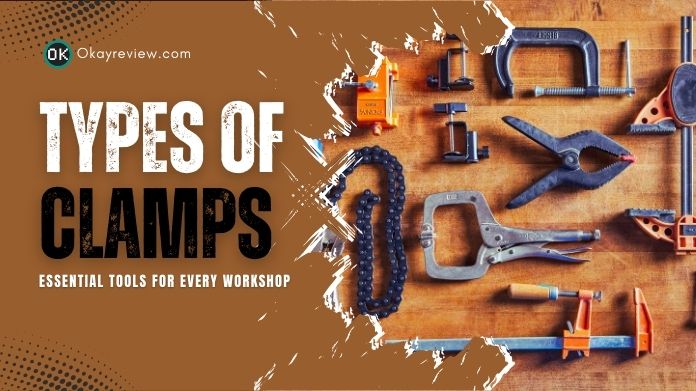To glue two wooden boards without a clamp is one of the feel and very well-known causes of frustration.
Arranged and pressed down with one hand, reaching over with the other to a tool, and suddenly, it just slipped again. This is the part where clamps come in.
Clamps are the extra hands needed in tool storage at every workshop. Just like a hammer puts nails in place and a screwdriver works on screws, clamps hold everything together when making your wooden, metal, building, or simple home repairs, so much better.
Let us break down the different types of clamps and how they can make life easier.
Table of Contents
Understanding the Basics of Clamping
What makes a good clamp isn’t just its strength, it’s how securely it grips without damaging your material. A reliable clamp balances grip, load capacity, and safety.
Beginners often make the same mistakes: overtightening (which can dent wood or strip threads) or under-clamping (where the workpiece still shifts around).
A good rule of thumb: use enough clamps to prevent movement. Apply pressure evenly and avoid cranking down harder than necessary. Think of it as firm but not crushing.
Common Types of Clamps for Everyday Workshop Use
1. C-Clamps (G-Clamps)
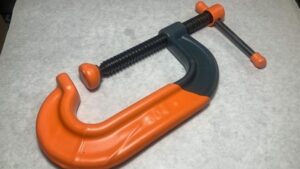 These are the classic shapes like a “C” or “G”, depending on how you see them.
These are the classic shapes like a “C” or “G”, depending on how you see them.
They are so incredibly simple, cheap, and versatile. You’ll find one in almost every toolbox.
Just remember to slip scrap between the clamp and your work so that nails don’t get dented.
2. F-Clamps (Bar Clamps)
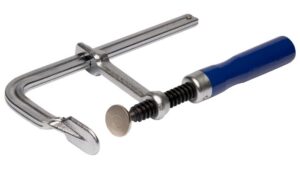 If a C-clamp is just too small to do the job, reach for an F-clamp.
If a C-clamp is just too small to do the job, reach for an F-clamp.
A little more opening and productive, with an adjustable arm, they’re the way to go for woodworking, welding, or really any project of a larger nature.
They give you reach and flexibility without breaking the bank.
3. Pipe Clamps
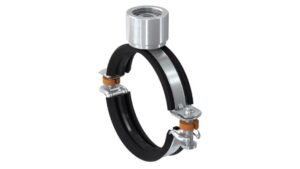 DIY woodworkers swear by these. Why? Because the clamping capacity depends on the pipe length you can make them as long as you need.
DIY woodworkers swear by these. Why? Because the clamping capacity depends on the pipe length you can make them as long as you need.
They’re great for gluing up tabletops, doors, or other oversized assemblies.
4. Spring Clamps
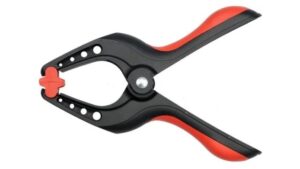 Light, quick, and cheap spring clamps are the workshop’s “snack-size” helpers.
Light, quick, and cheap spring clamps are the workshop’s “snack-size” helpers.
They’re perfect for holding a piece in place temporarily while glue sets or when you just need a third hand for a few minutes.
5. Hand Screw Clamps
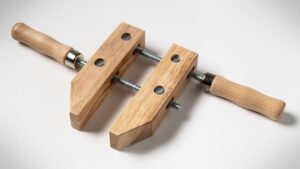 Old school but good. These clamps have jaws that can be adjusted for holding at angles where other clamps struggle.
Old school but good. These clamps have jaws that can be adjusted for holding at angles where other clamps struggle.
Indeed handy in woodworking when precise alignment is needed.
Specialty Types of Clamps for Precision and Speed
1. Locking & Sheet Metal Clamps
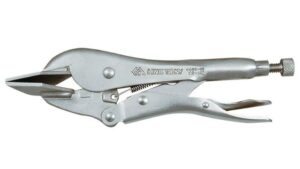 If you’ve welded anything at some time of your life, you’re familiar with how useful one-handed clamps can be.
If you’ve welded anything at some time of your life, you’re familiar with how useful one-handed clamps can be.
One snap-and-lock one-handed locking clamps keep everything in place; they are important in metalworking.
2. Quick-Grip (One-Hand) Clamps
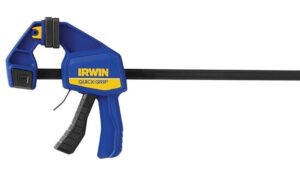 These are perfect when you’re working solo. With a squeeze of the handle, you can tighten them down in seconds.
These are perfect when you’re working solo. With a squeeze of the handle, you can tighten them down in seconds.
Great for light- to medium-duty work when speed matters more than brute strength.
3. Parallel & Sash Clamps
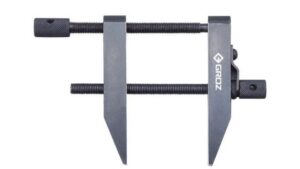 Pressure is everything when gluing panels or large boards.
Pressure is everything when gluing panels or large boards.
Parallel clamps allow surfaces to stay flush without bowing.
They’re a favorite among cabinet makers.
4. Miter & Corner Clamps
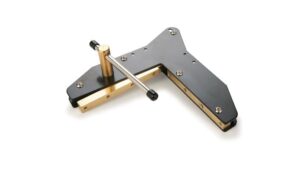 Ever tried building a picture frame by hand? It’s nearly impossible to hold the corners square without one of these.
Ever tried building a picture frame by hand? It’s nearly impossible to hold the corners square without one of these.
Miter and corner clamps make box and frame assembly so much easier.
5. Edge & Cabinetry Clamps
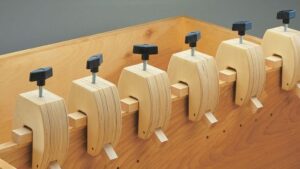 Edge and cabinetry clamps are specialty tools for furniture assembly.
Edge and cabinetry clamps are specialty tools for furniture assembly.
They apply pressure across multiple directions, keeping edges aligned while you fasten pieces together.
Industrial and Heavy-Duty Types of Clamps
1. Dimide & Long Series Clamps
 These aren’t your everyday clamps. Built for metalworking and autobody repairs, Dimide clamps can even be used with impact wrenches for high torque applications.
These aren’t your everyday clamps. Built for metalworking and autobody repairs, Dimide clamps can even be used with impact wrenches for high torque applications.
Long series clamps, meanwhile, offer extra reach for sheet metal work.
2. Hydraulic & Pneumatic Clamps
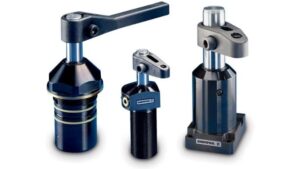 When it comes to production, speed counts the most. Hydraulic and pneumatic clamps bring power assistance, fixing the workpiece at the push of a button.
When it comes to production, speed counts the most. Hydraulic and pneumatic clamps bring power assistance, fixing the workpiece at the push of a button.
They are designed especially for repetitive operations on production lines.
3. Lifting Clamps
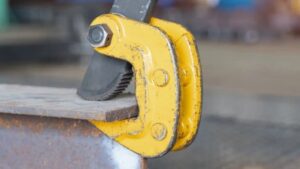 When you need to move beams, plates, or other heavy loads, lifting clamps are built for safety.
When you need to move beams, plates, or other heavy loads, lifting clamps are built for safety.
They come in different styles beam clamps, scissor clamps, vertical plate clamps each designed to secure loads without slipping.
Utility Types of Clamps Beyond the Workshop
1. Hose Clamps
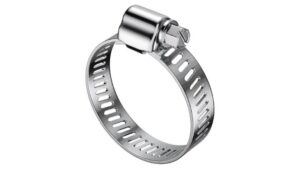 You’ll see these everywhere from car engines to plumbing repairs.
You’ll see these everywhere from car engines to plumbing repairs.
They tighten around hoses to prevent leaks and are indispensable in both DIY and professional work.
2. Cable & Ground Clamps
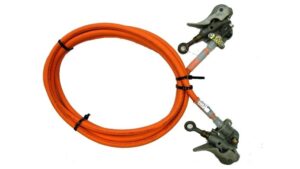 Cable and ground clamps are mainly used by electricians as a safety device. They use these for the safe connection and management of cables.
Cable and ground clamps are mainly used by electricians as a safety device. They use these for the safe connection and management of cables.
Everything is kept tidy and neat while presenting a perfect electrical connection.
3. Web (Strap) Clamps
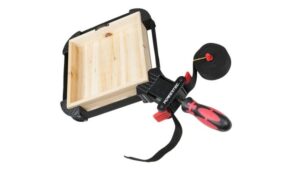 When dealing with awkward shapes like chairs, barrels, or curved furniture, strap clamps wrap around the piece and tighten evenly.
When dealing with awkward shapes like chairs, barrels, or curved furniture, strap clamps wrap around the piece and tighten evenly.
Basically, it’s used for clamping irregular shapes, especially useful in furniture making.
Choosing the Right Clamp for the Job
With so many options, how do you decide? Consider:
- Material: Wood, metal, or plastic?
- Size & Load: How large or heavy is the project?
- Precision: Do you need exact alignment or just a quick hold?
- Budget: Some specialty clamps can get pricey.
If you’re pretty new to the game, a couple of C-clamps and F-clamps, plus a couple of spring clamps, should cover some of the most basic needs.
As the projects get larger, a few pipe clamps should be added for larger assemblies, plus maybe one or two specialty clamps for precision work.
Think of your clamp collection as a toolbox you build over time not something you need all at once.
Our Thoughts
Clamps may not be the power tools that everyone loves most, but they are indeed the silent heroes of every workshop.
They do not cut, drill, or shape but make sure that your work is exactly where you have left it. If you are a newbie in DIY or professional work, do not consider overlooking clamps.
Try as much as possible to use all types of clamps; find out what will suit your way of executing projects, and invest in the best quality when you can.
The right clamp not only makes work easier; it makes it safer, more precise, and so much more fun.

